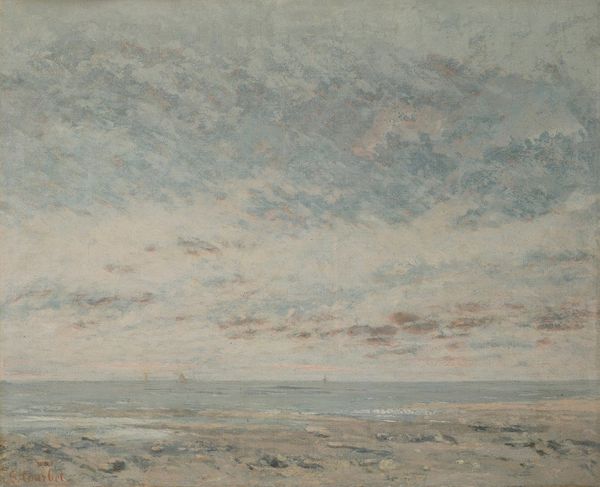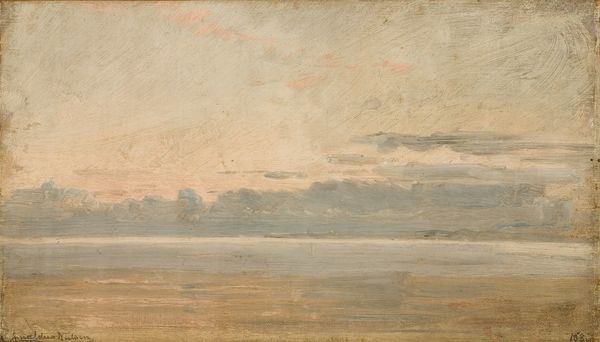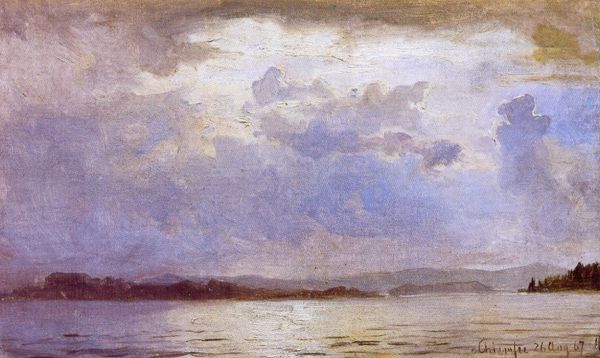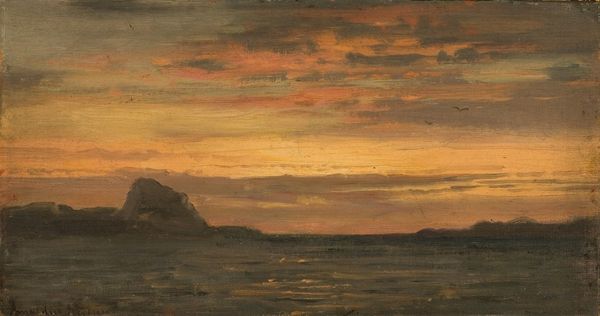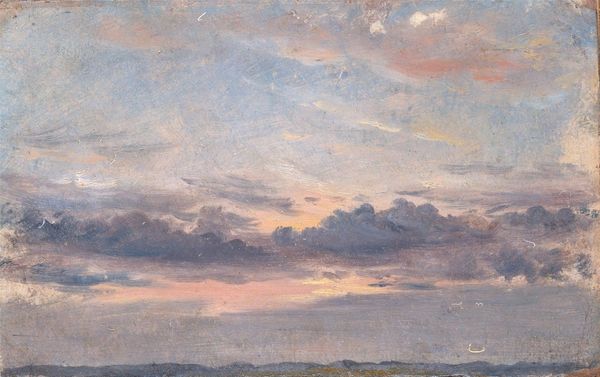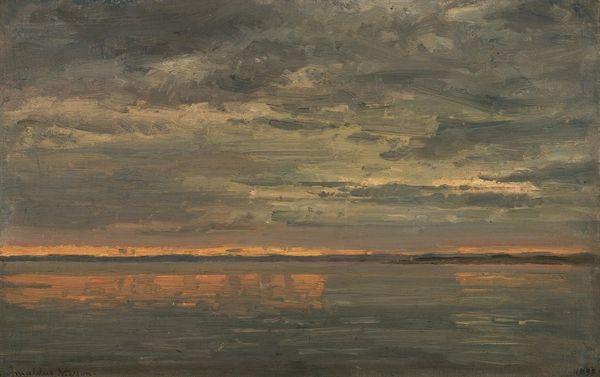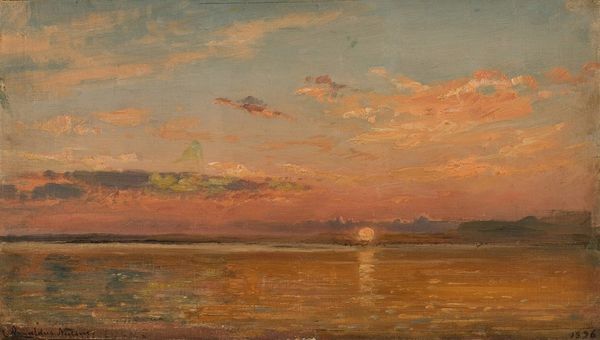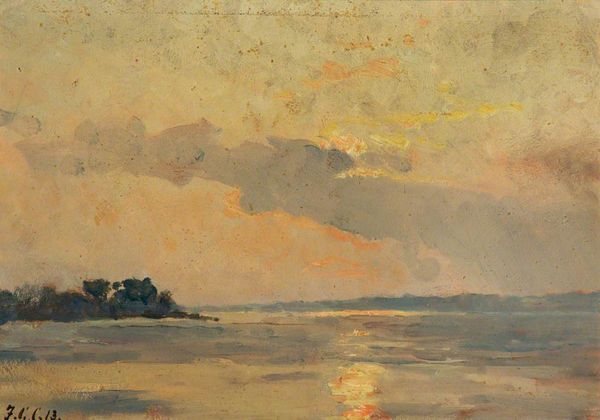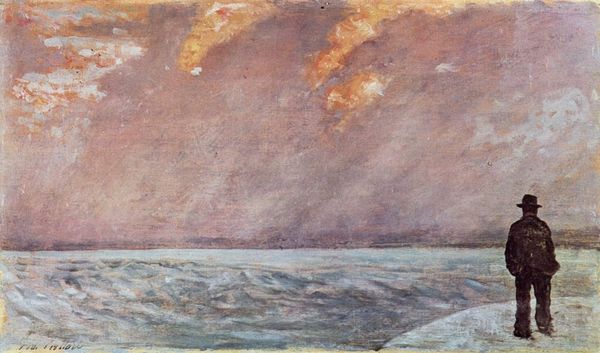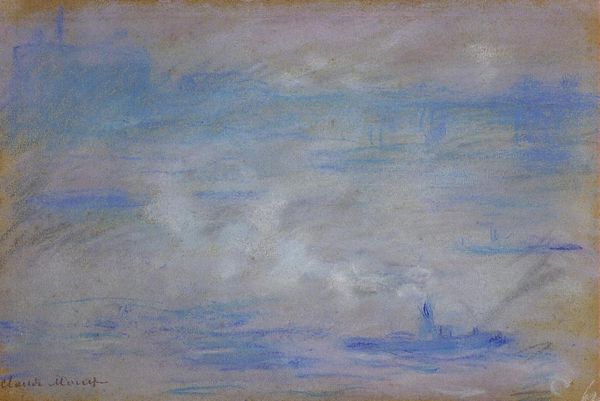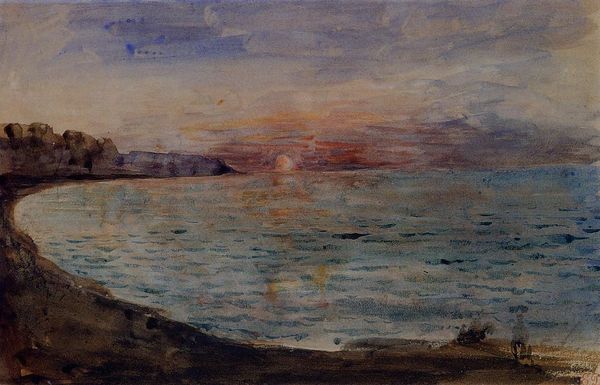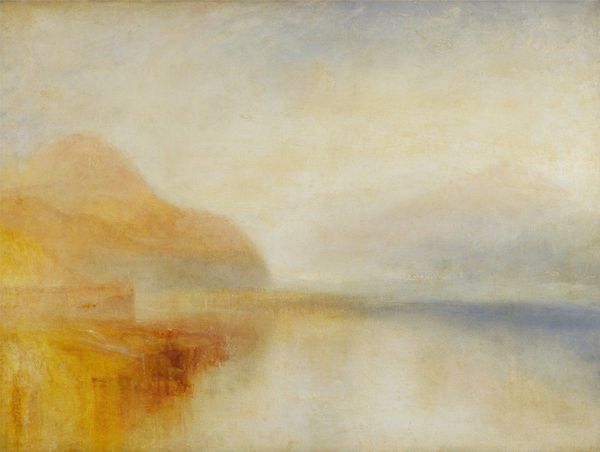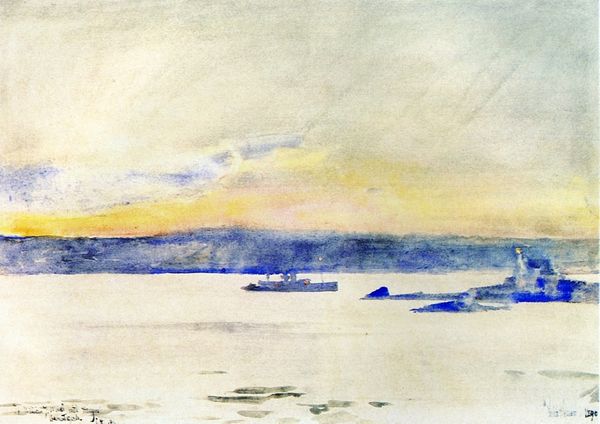
plein-air, watercolor
#
water colours
#
impressionism
#
plein-air
#
landscape
#
watercolor
#
watercolor
#
realism
Copyright: Rijks Museum: Open Domain
Curator: Louis Apol crafted this watercolour scene, "Lucht boven de Barentszzee," around 1880. The painting, housed here at the Rijksmuseum, offers a glimpse into the artist’s engagement with the Barents Sea. Editor: The watercolour feels quiet, almost desolate. There is a distinct division between the pale water and an almost oppressive cloud formation. The limited colour palette evokes a sense of starkness. Curator: Apol masterfully employs horizontal layering in this artwork, and through semiotics, it evokes nature’s powerful indifference. He uses the watercolour medium to capture nuances in light, emphasizing the chromatic interaction between the water and the sky. It appears like an exercise in mirroring through colour. Editor: Considering the period, there is a prevailing Romanticized and even masculine viewpoint reflected in landscape painting. How did Apol consider Dutch colonialism through trade and fishing? Was there a social or economic lens that might expose potential tension and its relationship with power and control through visual presentation of seemingly benign scenery? Curator: Apol’s training reflects a realism informed by landscape masters like Andreas Schelfhout. However, I think his formal approach moves beyond mere transcription of nature. The reduction of details suggests an interest in the atmospheric effect itself and I see it within a formal language. The light reflected in the Barentsz Sea operates less as document than as an essay in color interaction. Editor: I agree, but within its landscape traditions, could the muted palette signify broader historical or societal contexts specific to this geography and Apol's subjectivity as an artist during Dutch colonial expansion? The way the colours mix almost reminds me of dirty, melting ice…perhaps that means something in the broader understanding of natural resource use at the time? Curator: It does push towards those conversations; however, I can also admire Apol's use of open brushwork to abstract that particular mood onto watercolour. It's this level of abstraction that truly compels me, not any sort of representational claim. Editor: Fair enough. For me, art invites layered questioning, so the artist becomes a starting point in wider exploration.
Comments
No comments
Be the first to comment and join the conversation on the ultimate creative platform.
